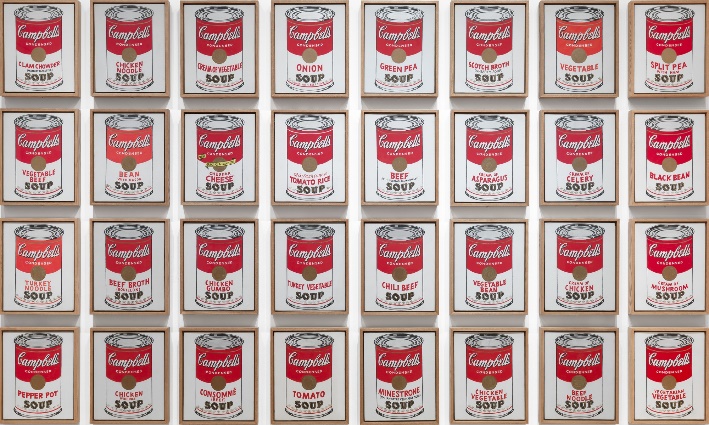The picture I will be discussing this week is Campbell’s Soup Cans by Andy Warhol.

32 Campbell’s Soup Cans was created in 1962 by Andy Warhol. It consists of 32 paintings depicting all of the existing in 1962 flavors of Campbell’s soups. The painting currently remains in the collection of the Museum of Modern Art in New York. The artwork was produced with the help of the silkscreen technique. At the first exhibition, 32 Campbell’s Soup Cans were displayed on shelves and each had its own smell in compliance with the label, similar to a real supermarket. If we look at this artwork from the perspective of the time when it was created, it can be called revolutionary and groundbreaking. Needless to say that not all Warhol’s contemporaries understood the painting – most considered it to be a symbol of consumerism and an example of modern art’s decline. The bottom line, however, is that Warhol was an adherent of consumerism. He believed the contents of his artworks – famous people, money, goods – to be the objects of consumption and usage.
I greatly enjoy the idea that Andy Warhol was able to create new idols and objects of worship out of common everyday things; notably, out of Campbell’s soup cans. It was a very cheap and extremely popular food product among poor people. In a way, Warhol slams and mocks modern culture with its constantly changing ideals. He managed to turn the acknowledged idols into consumer objects by having them copied, circulated, sold, and used. Thus, 32 Campbell’s Soup Cans is an outstanding and path-breaking manifestation of Warhol’s philosophy.
As for the response to a post about Roy Lichtenstein’s Girl with Ball, I completely agree with the author because I like this picture, too. I have sympathy for the pop art movement and style in general. I think it was something very pioneering and unusual for its time. I appreciate pop art for its simplicity, recognizable tone, and themes and usage of color different from classical art. However, in the post I would like to read more about the author’s personal thoughts concerning the pop art movement as well as some analysis of the picture.